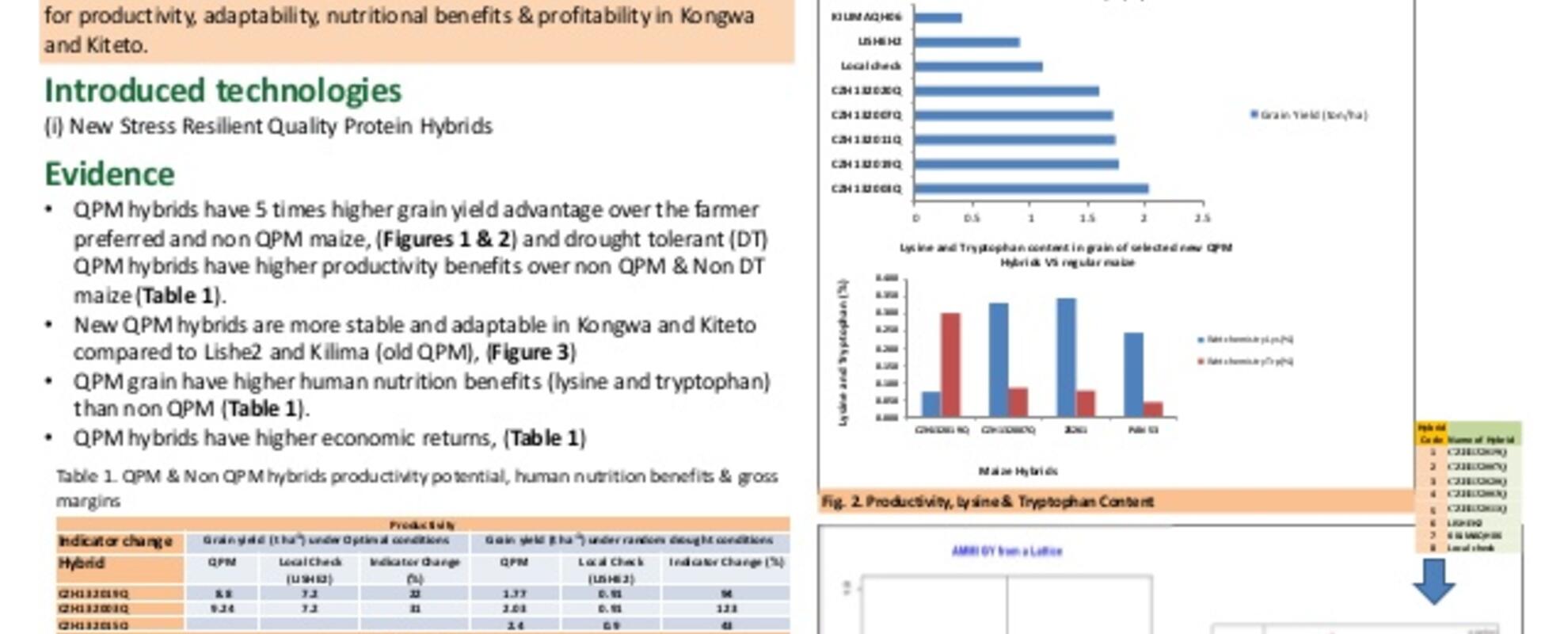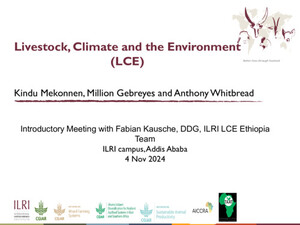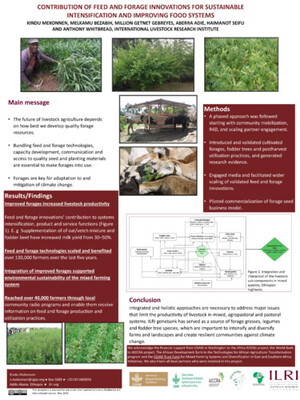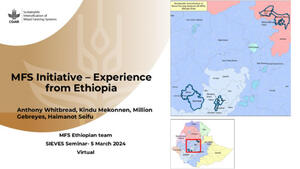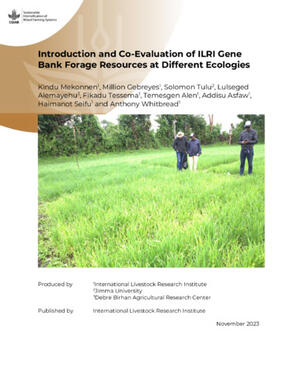
Productivity potential and nutrition quality of quality protein maize hybrids in central Tanzania
Maize is a key staple food for the majority of smallholder farm families in central Tanzania. But the productivity of this staple crop is constantly called into question due to erratic rainfall, declining soil fertility, as well as pests and diseases. Additionally, the nutritive quality of the predominantly maize-based diets of the smallholder families living in the region is starch heavy, but protein and vitamin deficient. This means that a majority of these farm families are not food secure.
This poster presents the findings of an Africa RISING intervention in central Tanzania’s Kongwa and Kiteto districts that aimed at addressing these challenges by testing and validating drought-tolerant quality protein maize (QPM) hybrids. QPM hybrids contain enhanced levels of Tryptophan and Lysine, precursors for protein synthesis. QPM can therefore contribute significantly in addressing nutritional gaps usually faced by many poor communities relying on mostly maize-based diets for nutrition.
This two-year research was conducted in eight villages, but good quality data used for analysis was collected from five villages. Key findings of the intervention were as follows:
- The new QPM hybrids had two folds and a higher yield advantage compared to old QPM and non QPM hybrid (Figures 1 and 2 in the poster).
- The new QPM hybrids had higher lysine and tryptophan content (Figure 2 in the poster).
- Three villages which had similar ecological characteristics, while Sefu village achieved the most responsive results (Figure 3 in poster). Similar agro ecological characteristics in 3 villages implied that hybrids suitable in each of those villages can also be grown in the other villages within this ecological zone while the other two villages had distinct characteristics. This suggests that only specific hybrids suitable in those villages can be grown there (Figure 3 in poster). The new QPM hybrids and the local hybrid were stable and adaptable to the test environments while the old QPM (LISHE2 & KILIMAQH06) were not stable or adaptable in the test areas.
The new QPM varieties are more profitable compared to old QPM hybrids and the local hybrid (Table 1 in poster).
This poster was presented at the Africa RISING ESA project review and planning meeting in Lilongwe, Malawi, on 3–5 October 2018.





